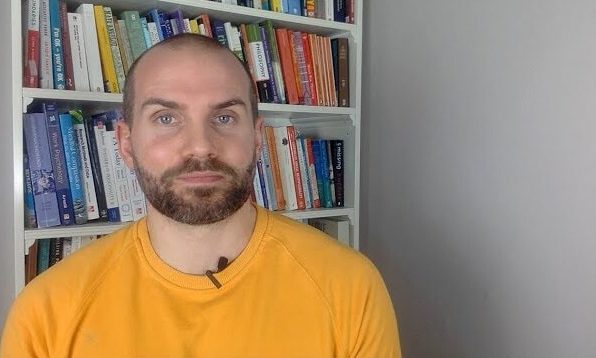Fraser from the Private Therapy Clinic is back and this time he’ll be talking about ASD or Autism Spectrum Disorder. In this video, Fraser will discuss an overview of what ASD is, its frequency and statistics in the UK, characteristics of patients diagnosed with ASD as well as the process of diagnosing and the treatment for the condition.
Transcript
Hey guys, I’m Fraser from Private Therapy Clinic and in this video, I’m going to be taking you through a lot better of an understanding about what Autism Spectrum Disorder or ASD is all about and some of the treatment options that can be really, really effective for anybody that has Autism Spectrum Disorder.
So the first question that we need to ask is what exactly is autism spectrum disorder or ASD? But it can be defined literally as a lifelong development issue. ASD creates different challenges or different ways of kind of thinking and behaving and interacting with other people. It impacts how people see the world and how they interact with it, how they interact with the world as a whole and how they actually interact with other people. People with ASD can see, hear, feel the world in a completely different way to other people. Now, this is not to say anything about limitations of people with ASD. I want to be that very clear that this is not about because somebody has ASD or Autism Spectrum Disorder that therefore, there are severe limitations for that individual. Sometimes, of course, that can be the case, but more often than not, what it is is simply a different way of seeing the world.
There may be some specific characteristics attributable to old people with ASD, but everybody with the ASD is a little bit different than the next person. There are real subjective, unique characteristics and features that are attributable to each individual that experiences Autism Spectrum Disorder.
At times, of course, ASD can be really severe. It can be quite profound for some people and they require some additional support needs for kind of living for example. Things like sheltered housing or additional support at school for example, or work can be required sometimes for people with ASD.
So that’s a little bit of an overview, a lot better of a brief overview of what exactly Autism Spectrum Disorder is all about.
How common is Autism Spectrum Disorder in the United Kingdom though? Well, it’s actually more common than people might think in the first place. There are over 700,000 autistic people in the UK. That equates to one in every hundred people have an element of Autism Spectrum Disorder to some degree. Diagnosing Autism Spectrum Disorder can be difficult, but at times, what the statistics and what the research shows anyway that that often affects boys more than it affects women.
So the next question that you may actually be asking is how do people with Autism Spectrum Disorder actually see the world? Now, some people with Autism Spectrum Disorder can see the world as being a little bit overwhelming at times. And this can cause challenges with anxiety for example. But mainly, it’s about seeing the world in different ways to other people. They’re experiencing the world in a completely different way to what other people are trying to teach them even at times.
I used to work as a support worker for young people with additional support needs, and we saw a lot of people with Autism Spectrum Disorder. And one of the key characteristics to good treatment to good care for those individuals was to try and empathize as much as possible, to see that individual subjective and to know that they’re going to see the world in a very different way than what I see. It doesn’t make me right. That doesn’t make them right. It doesn’t make either of us wrong. It’s just about the fact that things are different. And once I understood that a little bit better, I really got to grips with what Autism Spectrum Disorder was all about.
It wasn’t necessarily the stigmatized entity that some things we hold to that is a severe limitation. It’s a severe disability. It’s not always like that. Often, what it is, it’s just a case of people seeing the world in different ways.
Now, as of course true to see that partaking and participating in social life for people with Autism Spectrum Disorder can be a real challenge. It’s common that people with ASD often feel misunderstood or that they actually have difficulties in building rapport with other people. Again, let me take you back to the point I said earlier. That’s not about right or wrong. That’s not a bit correct or incorrect ways of socially interacting with people. That’s simply about things just being different. And I think a lot of the key points to working with anybody with ASD is to help them adopt their understanding that they just see the world in a different way than what we might see it.
So we’ve taken a little bit of an overview as to what Autism Spectrum Disorder is, some of the challenges that people with Autism Spectrum Disorder actually have. But how do we go about the process of actually diagnosing ASD?
A formal diagnosis really has to come through a multidisciplinary team. People that work in speech and language therapy, occupational therapy, psychology, even psychiatry at times all need to be involved to establish a true, formal diagnosis for somebody. Diagnosis as of course subjective, like many things attributed to ASD, but there are a couple of characteristics that need to be present in order for that diagnosis to actually be made. There needs to be challenges with social communication and social interaction, and there also needs to be something called restricted patterns of behaviour. They need to be present from pretty young age or from an historical sense.
Autism Spectrum Disorder is not something that necessarily just rears its head and all of a sudden appears. It comes from early childhood. Now, these repetitive behavioral patterns have to be in place where it at least seems or feels like it’s life limiting so it is. It’s a case where these restricted patterns of behavior are having a bit of a negative implication on the individual’s life.
One of the real challenges and kind of all the things I’ve talked about, understanding autism, understanding what it’s all about, understanding what people with ASD actually experienced the world like and challenges with diagnosis is to do with the fact that ASD is not one size fits all. It comes on a on a weight spectrum. And an example of this could be, you know, high functioning autism.
Now, what I want to see your first is that this isn’t actually a formal term of diagnosis. Somebody doesn’t necessarily get diagnosed with high functioning ASD. They may be, would be diagnosed with ASD and it’d be deemed that they were high functioning though. However, they’d still have challenges with sort of like social interaction and social communication and understanding.
Now, the term of diagnosis and understanding of Autism Spectrum Disorder and the wide spectrum of ASD has been made a little bit challenging by some professional bodies. For example, the American Psychological Association created one umbrella term: Autism Spectrum Disorder to encapsulate the old people that experience autism to some degree, so we don’t really have much of a variety or much of a different way in assessing and diagnosing and understanding people with autism on that wide spectrum.
Now, I think it’s also important to look at the challenges of people that experience Autism Spectrum Disorder and therefore in order to understand a little bit about the treatment for Autism Spectrum Disorder.
Now, what I’m going to say here is that we here at Private Therapy Clinic provide really excellent therapy primarily through cognitive behavioral therapy and other forms of therapy as well that can be really, really, really impactful for anybody that experienced Autism Spectrum Disorder. And a lot of the teams that therapy required is because of some of the additional issues experienced by people with ASD. For example, one in every three of people diagnosed with ASD has a learning difficulty. And 70% of them have experienced some complications with their mental health. So therapy is a really important and viable option for anybody that is experiencing ASD. And like I said here at Private Therapy Clinic, we provide excellent therapy for anybody who is experiencing some form of Autism Spectrum Disorder.
But why exactly as cognitive behavioral therapy or CBT such a good option for somebody with Autism Spectrum Disorder?
Well, CBT can normally be really effective in overcoming some of those mental health challenges that so many people with ASD suffer from, but it can be also really good for learning and adopting new skill patterns, behavioral patterns and thinking patterns that maybe some of the issues relevant to Autism Spectrum Disorders such as social interaction and social communication. Cognitive behavioral therapy can be really, really effective in actually implementing some of those new skills and some of those new techniques to make life much more straight forward.
Okay guys, thanks so much for watching this video on Autism Spectrum Disorder. I’m Fraser from Private Therapy Clinic. Hopefully, this video has been of use to you. Hopefully, you’ve gained some value from it. And if you are considering cognitive behavioral therapy or any kind of therapy for anybody that you know, or if you have Autism Spectrum Disorder, then make sure to get in touch with us here at Private Therapy Clinic. And thank you so much for watching.
















